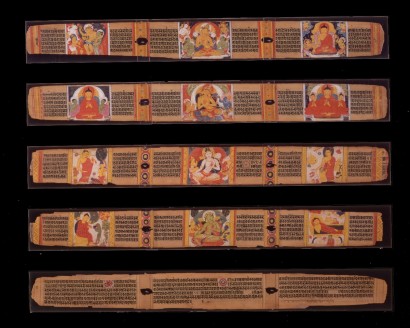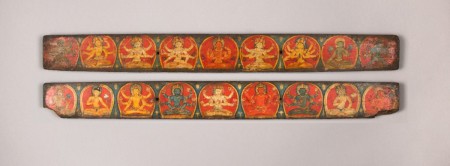India, Bihar, Nalanda monastery, Pala period, late 11th century; ink and opaque watercolor on palm leaf; each approx. 2 7/8 x 22 3/8 in.; Asia Society, New York, Mr. and Mrs. John D. Rockefeller 3rd Acquisitions Fund, 1987.1, photo: Susumu Wakisaka, Idemitsu Museum of Arts, Tokyo, Courtesy of Asia Society, New York.
To commission or execute a revered scripture, such as the Perfection of Wisdom Sutra in Eight Thousand Lines (Prajnaparamita Sutra), was believed to garner enormous merit for the patron as well as the artist. Indian Buddhist monasteries once contained huge numbers of such works, preserved between wooden covers like these and stored on library shelves. Material evidence, such as the residue of offerings, indicates that Prajnaparamita texts were treated as icons to be venerated. During the Indian Buddhist diaspora, many of these texts came to Nepal and Tibet. A Nepalese artist fashioned these manuscript covers. On top, a female personification of wisdom—Prajnaparamita herself—appears in the center, flanked by six manifestations of Tara.





